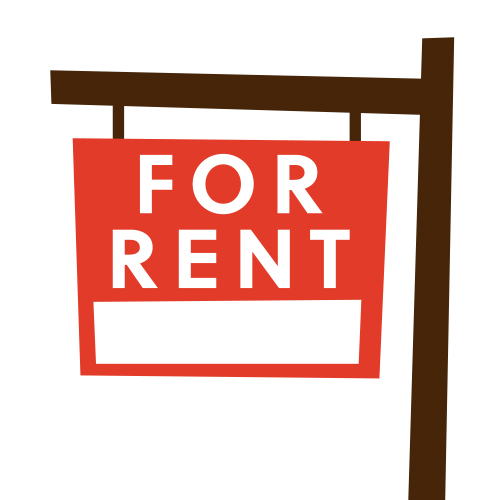Having an effective exit strategy is just as important as your entry strategy. There are a number of investment real estate exit strategies to choose from, but a good exit strategy will ensure that you are receiving the best results as an investor when your house flip comes to a close. There are no incorrect exit strategies, instead, it depends on your house flipping objectives and your initial plans. Each exit strategy has its own benefits and drawbacks.
 The Selling Price
The Selling Price
Once you are done (or almost done) with your rehab work, you need to make a final decision as to what your exit strategy will be for the property and the loan you took to purchase and rehab it. So where do you start?
1. Starting Price
Review the business plan that you developed early in the process, paying special attention to the price you thought you could sell the property for. Is that price still valid?
2. Current Market Value
You should have at least three realtors tour the property and give you suggested listing prices, this will help you determine the current market value. The realtors should be able to show you the basis for their suggested pricing, specifically showing you comparable homes for sales, recently closed sales and homes with similar recent improvements.
3. Compare Current Market Value to Starting Price
Once you have a good sense of what the current market value is, compare it to your expectations at the beginning of the project. Hopefully, if you were conservative at the outset, the numbers will be similar.
4. Expenses
Look at your expenses, were they in line or better than your initial projections? If all current factors are consistent with the original figures, you should be in good shape. Also, keep in mind the lowest price you can accept and still consider the project a success. Knowing what this number is ahead of time will prepare you to negotiate any offers you receive.
5. Pricing the Property
Price the property near where you believe the current value is. If you are looking for a quick sale, and have enough profit built into the project, price it slightly below the market. If you have the luxury of time, you can price it a little higher. If the costs were higher than you anticipated, and/or the current market value is lower than you thought it would be, you will have some hard choices to make.

Use our house flipping calculator to calculate a cost breakdown for your project.
A property will only sell for what the market will bring, regardless of your basis in the property. Do not price it above the market in order to recover your costs as it is unlikely that it will sell at the price, and will become stale on the market.
Eventually, you will have to reduce the price, and will have wasted the time and money it costs to carry a property longer than you should. You may have to give up your profit, and even take a loss, if you overspent and did not get a commensurate increase in value for the property. Act decisively and quickly in this situation, the situation will only get worse, not better.
 A good exit strategy will ensure that you are receiving the best results on your house flip.
A good exit strategy will ensure that you are receiving the best results on your house flip.
Traditional Selling
 Traditional selling is a real estate exit strategy where the buyer is responsible for their own financing. Most home sales are handled in the traditional way, meaning that the buyer makes an offer on a house as long as they can find acceptable financing and then goes to various brokers or lenders looking for a mortgage.
Traditional selling is a real estate exit strategy where the buyer is responsible for their own financing. Most home sales are handled in the traditional way, meaning that the buyer makes an offer on a house as long as they can find acceptable financing and then goes to various brokers or lenders looking for a mortgage.
Recently, many people have challenged traditional lender’s tight control on mortgage lending. Due to these controls, people who used to have no issue qualifying for a mortgage loan are now having difficulties. Even the most qualified borrower will have to go through an extensive and detailed underwriting process to be approved.
The seller’s benefit of having the buyer find their own financing is that once this financing is approved, the transaction will close. The seller will get paid for the sale at the settlement table and be out of the transaction. This is optimal most of the time. However, when the buyer gets a mortgage the process is often slow and not always positive, creating a problem for both parties.
If you are lucky enough to get a cash offer, verify that the buyer has the cash and then accept the offer even if it means getting a slightly lower price for the property.
Cash is king in the real estate world.
Seller Financing
One of the challenges that come with selling a house in the current market is that a buyer may have trouble getting a mortgage. The current lending environment may mean that a seller has to lower their asking price, take a loss or they have to keep waiting for a qualified borrower. If someone is anxious to sell, then it might be wise to attempt seller financing.
Seller financing has made a comeback in recent years in the residential housing market. It’s not for everyone, but there are a lot of advantages to seller financing. If a seller needs quick access to cash, seller financing will lead to a quicker sale. Seller financing also enlarges the buyer pool by making the property available to borrowers that might not qualify for financing otherwise.
Closing times are faster without the need for an outside lender and the property may get a higher price if the seller is willing to “hold the paper” on the loan. The buyer will have lower fees, which free up more cash to pay to the seller. The seller will receive a stream of income on the note, which could be sold to a third party if the seller chooses to do so.
However, there are disadvantages for both parties with seller financing. For the buyer, they will most likely pay a higher price for the property, a higher interest rate and need a larger down payment. The situation is also more complicated and riskier when the seller still has an outstanding mortgage on the property.
It is likely that the seller’s mortgage has a “due on sale” clause which would require that the loan be paid off upon sale. Should the seller’s mortgage lender know about the sale, they could require the seller to pay the loan off, which they might not be able to do.
When there is an existing mortgage, the buyer is relying on the seller to keep its mortgage current. If the seller defaults on their loan, the buyer would be subject to foreclosure.
For the seller, it runs the risk that the buyer defaults on its obligations to the seller, and it will have to foreclose and evict. During the buyer’s ownership of the home, it could be damaged or the utilities or taxes may not be paid. This could all become the seller’s problem when there is a foreclosure.
Both the buyer and seller need to practice extreme caution with each other before entering into a seller financed transaction. Without understanding a property’s and each others’ financial status, each party is putting themselves at risk if the seller financing agreement fails.
 Rental
Rental
Depending on your circumstances, one of the more effective real estate exit strategies may be to not sell at all but rent the property instead. Be sure that your rental price is consistent with the market for the size of the property and the upgrades you installed.
It is not uncommon for house flippers to hold onto renovated properties for cash flow over a period of time rather than sell them for instant profit. This can either be a long term or short term strategy.
In a short term case, a house flipper may want to get the property fully occupied with cash flowing in order to make more money from it upon sale. This could happen when a neighborhood is primarily rental properties owned by investors and the house flipper wants to wait until an optimal time to sell the property.
In the long term, the rehabber is making an investment to receive positive cash flow over an extended period of time.
In the long term hold circumstance, the house flipper must make sure that any loans on the property are at the lowest possible interest rate. Most rehab lenders are expensive, but necessary because traditional lenders do not generally lend on rehabs.
A finished, cash flowing property, however, is a different story. The rehabber should approach traditional lending sources to refinance out of the more expensive loan as quickly as possible. The best scenario is when the rehabber can pay off the rehab loan in cash, but that is not usually feasible.
After this, look at your expenses and see if they were in line with your projections on the business plan. If all the current factors are consistent with your projections then you are in good shape.
When renting property, price it as you would when pricing a house for sale. Look at comparable prices per square foot, etc. Compare the features of your project with the competition. Are the finish and the amenities nicer? Is there available parking? Access to stores and public transportation? Consult local realtors about rental rates, it can make all the difference.
Having trouble selling your property? You might want to consider looking into a real estate investment partner! A real estate investment partnership is a legally binding agreement to operate a business together in the real estate investment industry. Read about the Pros and Cons of a Real Estate Investment Partnership!

Learn more about the best real estate exit strategies!


 Rental
Rental